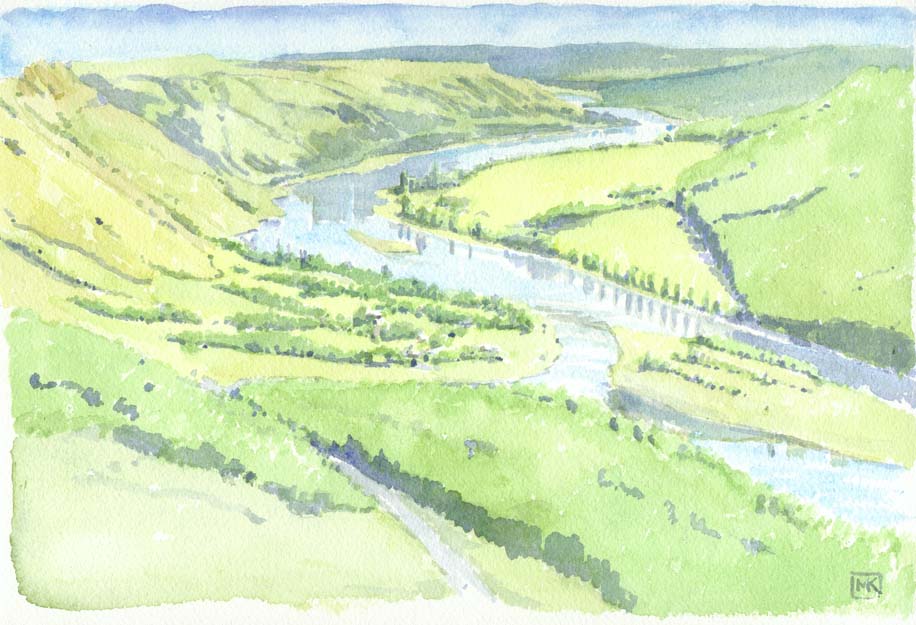Return to main Vanishing B.C. page Return to home page
Page last updated November 27, 2003
© Michael Kluckner

|
Sketched/written in 2003: The vista
looking east along the Peace River, seen from the cliff at the
south end of Fort St. John's 100th Street, is almost unchanged
from fur trading days when, about 1860, the Hudson's Bay
Company reestablished its fort on the flat on the far bank of
the river. The original Rocky Mountain Fort, also known as Rocky Mountain House, founded just upstream at the Peace's confluence with the Moberly in 1793 probably by Alexander Mackenzie (it may have been founded by John Finlay in 1794), was the first permanent non-native settlement on the BC mainland – it was closed for about 40 years following the massacre of the fur traders by a group of Indians allegedly disgruntled by the company's decision to operate only from Rocky Mountain Portage House (Hudson's Hope)--see John McLean, Notes of a Twenty-Five Years' Service in the Hudson's Bay Territory, London, 1849, excerpted in Peace River Chronicles p48 ff. Factor Frank Beaton moved the fort to the flat on the near side of the river in 1872, where it remained until in 1925 he moved it again, this time to the modern townsite [source: Fort St. John museum]. The flat below is now a semirural residential community, with a very large neo-Greek Revival house sitting on the Hudson's Bay Company site itself. Wrecked cars, pushed off the cliff over previous decades, dot the hillside, and a small shrine with a cross and faded pictures and flowers commemorates a young woman named Jessie Stephens (1978-2000) who drove over the edge one foggy night.
The old log homestead on the Darnell farm just north of Fort St. John, a beautiful property off Rose Prairie Road north of Fish Creek with long views over the rolling prairie. Ross Darnall and his wife Margaret came to Fort St. John in 1928 in a covered truck from the USA via Edmonton and Grand Prairie, loaded down with stoves and agricultural gear and their four children. They stopped on the side of the dirt track when it rained, pitched their tent, and resumed their trek when it dried out. Margaret's brother William "was BC's first Rhodes Scholar" [can anyone confirm this?] [Source: Davies and Ventress, Fort St. John Pioneer Profiles, FSJ Centennial Committee 1971, page 71]
The Grand Haven dance hall, now the clubhouse of the Fort St. John Moosemen Rugby Club and Fort St. John Flag Football, at Forster Field- on 269 Road. An interesting hexagonal log building with moose antler decoration. [Thanks to Eliza and Edward Stanford for advice and research help] |
